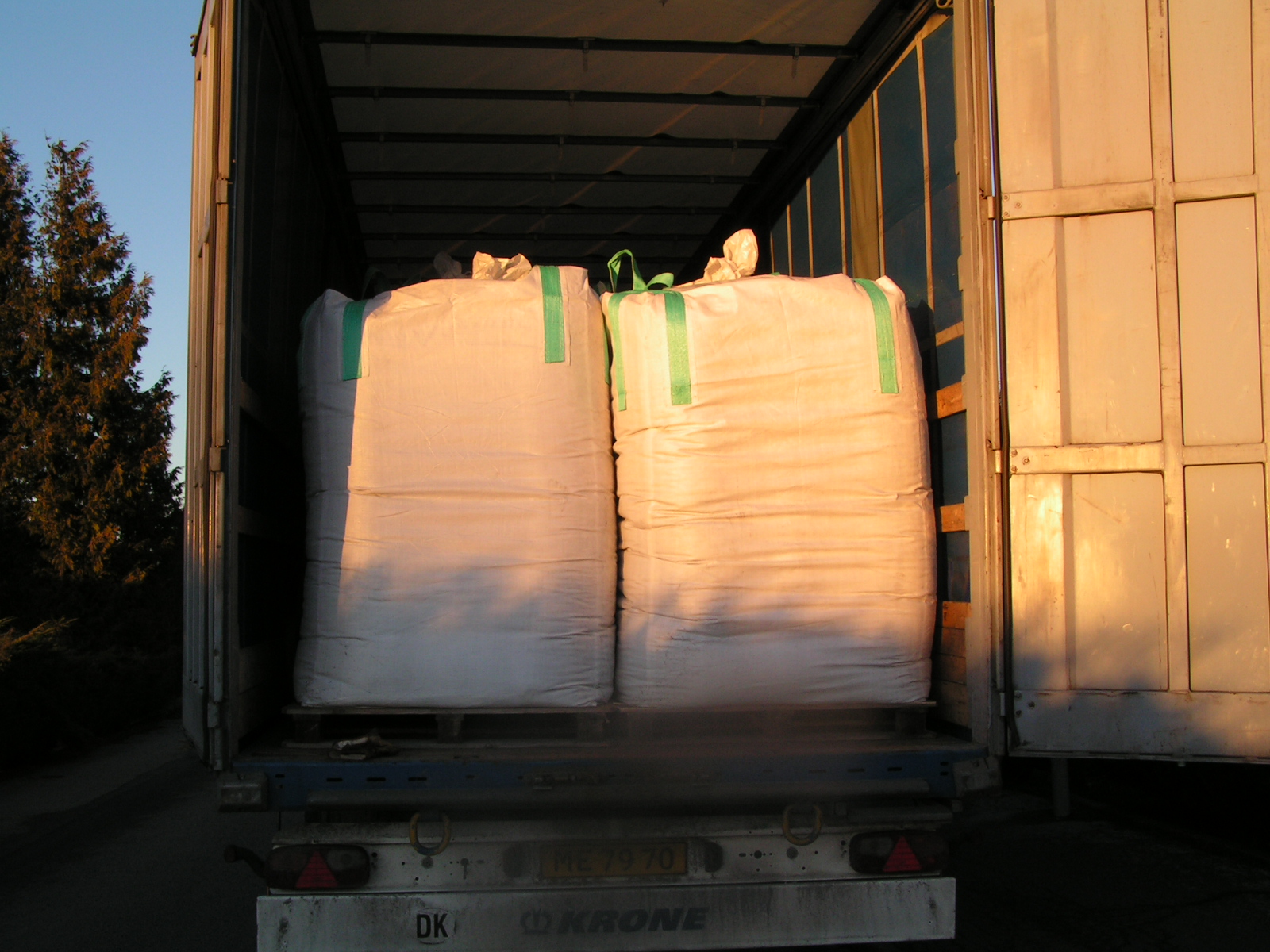Flexible intermediate bulk container on:
[Wikipedia]
[Google]
[Amazon]

 A flexible intermediate bulk container (FIBC), jumbo bag, bulk bag, dumpy bag, super sack or a big bag is an industrial
A flexible intermediate bulk container (FIBC), jumbo bag, bulk bag, dumpy bag, super sack or a big bag is an industrial
* BS EN 1898:2001 Specifications for flexible intermediate bulk containers (FIBCs) for non- dangerous goods {{DEFAULTSORT:Flexible Intermediate Bulk Container Packaging Shipping containers
 A flexible intermediate bulk container (FIBC), jumbo bag, bulk bag, dumpy bag, super sack or a big bag is an industrial
A flexible intermediate bulk container (FIBC), jumbo bag, bulk bag, dumpy bag, super sack or a big bag is an industrial container
A container is any receptacle or enclosure for holding a product used in storage, packaging, and transportation, including shipping.
Things kept inside of a container are protected on several sides by being inside of its structure. The term ...
made of flexible fabric that is designed for storing and transporting dry, flowable products, such as sand, fertilizer, and granules of plastic.
FIBCs are most often made of thick woven strands of oriented polypropylene
Polypropylene (PP), also known as polypropene, is a thermoplastic polymer used in a wide variety of applications. It is produced via chain-growth polymerization from the monomer Propene, propylene.
Polypropylene belongs to the group of polyolefin ...
, either coated or uncoated, and normally measure around in diameter and varies in height from . Its capacity is normally around , but the larger units can store even more. A FIBC designed to transport of material will itself only weigh .
Transporting and loading is done on either pallet
A pallet (also called a skid) is a flat transport structure, which supports goods in a stable fashion while being lifted by a forklift, a pallet jack, a Loader (equipment), front loader, a Jack (mechanical), jacking device, or an erect cra ...
s or by lifting it from the loops. Bags are made with either one, two, or four lifting loops. The single loop bag is suitable for one-man operation as there is no need for a second man to put the loops on the loader hook. The bags are emptied via a special opening in the bottom such as a discharge spout, of which there are several options, or by cutting it open.
History
Although there is disagreement on exactly where FIBCs were first made and used, it is certain that they have been employed for a variety of packaging purposes since the 1940s. These forerunners of the FIBC as we know it today were manufactured from PVCrubber
Rubber, also called India rubber, latex, Amazonian rubber, ''caucho'', or ''caoutchouc'', as initially produced, consists of polymers of the organic compound isoprene, with minor impurities of other organic compounds.
Types of polyisoprene ...
and generally utilized within the rubber industry for the transportation of carbon black
Carbon black (with subtypes acetylene black, channel black, furnace black, lamp black and thermal black) is a material produced by the incomplete combustion of coal tar, vegetable matter, or petroleum products, including fuel oil, fluid cataly ...
to be used as a reinforcing agent in a variety of rubber products.
By the 1960s, with the development of polypropylene
Polypropylene (PP), also known as polypropene, is a thermoplastic polymer used in a wide variety of applications. It is produced via chain-growth polymerization from the monomer Propene, propylene.
Polypropylene belongs to the group of polyolefin ...
combined with advances in weaving
Weaving is a method of textile production in which two distinct sets of yarns or threads are interlaced at right angles to form a fabric or cloth. Other methods are knitting, crocheting, felting, and braiding or plaiting. The longitudinal ...
, the bulk bags as we know them today came into being and were rapidly adopted by a wide variety of oil and chemical companies to store and transport powdered and granular products.
It was during the oil crisis of the mid-1970s that the FIBC really came into its own for transporting huge quantities of cement to the Middle East from across Europe for the rapid expansion of the oil producing countries. At its zenith, upwards of of cement was being shipped out on a weekly basis to feed the vast building program.
The modern FIBC transports a growing figure of over of product each year and is used to handle, store and move products as varied as cereals to powdered chemicals and flour to animal feeds. With a capacity of up to and load capability ranging from FIBCs are highly cost effective, easily recyclable and ideal for virtually any free-flowing granule, powder, pellet or flake. FIBCs are also being developed to hold and filter fluid products.
See also
*Geotextile
Geotextiles are versatile permeable fabrics that, when used in conjunction with soil, can effectively perform multiple functions, including separation, filtration, reinforcement, protection, and drainage. Typically crafted from polypropylene or ...
* Intermediate bulk container
Intermediate bulk containers (also known as IBCs, IBC totes, or pallet tanks) are industrial-grade containers engineered for the mass handling, transport, and storage of liquids, partial solids, pastes, granular solids or other fluids. There are ...
* Packaging
Packaging is the science, art and technology of enclosing or protecting products for distribution, storage, sale, and use. Packaging also refers to the process of designing, evaluating, and producing packages. Packaging can be described as a coo ...
References
Further reading
* Yam, K. L., "Encyclopedia of Packaging Technology", John Wiley & Sons, 2009, * Guide for Handling Flexible Intermediate Bulk Containers* BS EN 1898:2001 Specifications for flexible intermediate bulk containers (FIBCs) for non- dangerous goods {{DEFAULTSORT:Flexible Intermediate Bulk Container Packaging Shipping containers